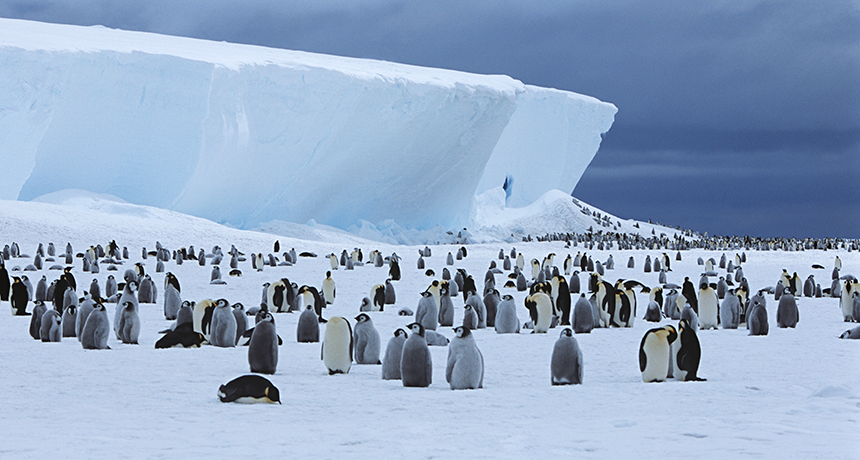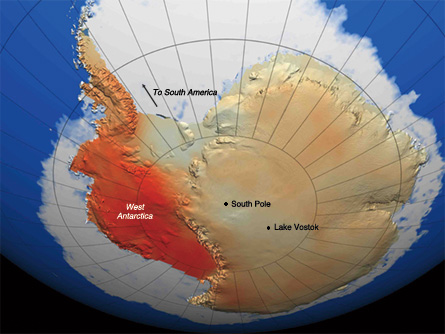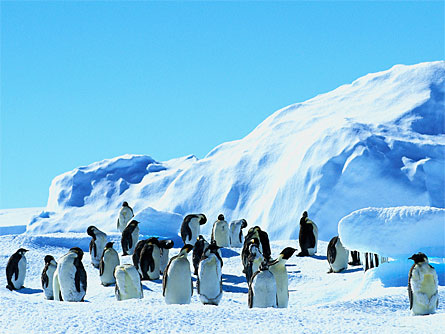Antarctica warms, which threatens penguins
Unexpected rates of warming threaten to change Antarctica and pose a threat to the survival of some of its penguins.

Penguins are ideally suited to thriving in frigid climates, such as the one pictured in this Antarctic vista. But warming weather may imperil the ability of some colonies of these birds to survive.
IPGGutenbergUKLtd/iStockphoto
By Susan Gaidos
 |
|
Since the 1950s, some portions of Antarctica have cooled (as denoted in faint blue tones), but many areas, including West Antarctica, have warmed substantially (red tones). The stronger the tone, the larger the warming or cooling.
|
| NASA and E.J. Steig |
New evidence from satellites and weather stations suggests that way down south, Antarctica is feeling the heat. And that’s not good news for penguins.
Scientists studying climate change knew some coastal areas of Antarctica were warming. But data from weather stations inland — at the South Pole and Lake Vostok — indicated these sites were actually getting colder. Researchers suspected that the whipping winds and freezing temperatures that grip these interior were keeping the rest of the continent cool, as well.
To check that out, a group of scientists decided to take a cold, hard look at the data. They combined weather data from 42 weather stations in Antarctica together with data collected from satellites. Some data went back 50 years. The scientists then devised a new way to estimate temperature trends in Antarctica.
It now shows that much of the continent — particularly the West Antarctic Ice Sheet — had been warming in recent decades. This region makes up about one-fourth of the continent. It also has a lower average elevation than East Antarctica. These data indicate showed that, overall, West Antarctica is warming by about 0.17 degrees Celsius per decade. That rate is comparable to the average elsewhere in the world. The new findings appear in the January 21 issue of Science News.
Just as the scientists suspected, parts of East Antarctica had cooled slightly between 1957 and 2006. But overall, warming in a far larger part of the continent more than offset the cooling seen at the South Pole and Lake Vostok.
Antarctica’s warming began somewhat recently, the scientists suspect. The rise in temperature was most likely spurred by a range of dramatic changes. For example, vast areas of sea ice off of the Antarctic coast have shrunk over the past 25 years. That lost sea ice has, in turn, helped open West Antarctica to storms carrying warm, moist air and snow.
“The new results … indicate that there’s warming related to greenhouse gases on all seven of Earth’s continents,” says Drew Shindell. He’s a climatologist at the NASA Goddard Institute for Space Studies in New York City and coauthor of the new study.
Melting ice sheets could also spell disaster for the continent’s wildlife. In another new study, this one reported in the January 26 Proceedings of the National Academy of Sciences, researchers focused on emperor penguins that rely upon the winter sea ice to breed.
 |
|
Emperor penguins could be on their way to extinction if climate change affects sea ice around Antarctica as expected.
|
| Corbis |
Data gathered at a penguin rookery in Terre Adélie, Antarctica, showed that when winter sea ice dropped by an average of 11 percent for several years running, the penguin population also took a nosedive. During that period, penguin numbers fell to half of normal. When the sea ice reached high levels, penguin populations remained high.
If Antarctic ice sheets continue melting at a high rate, emperor penguins could nearly be wiped out, says Hal Caswell. He’s a mathematical ecologist at the Woods Hole Oceanographic Institution, in Massachusetts.
Even if sea-ice melting slows, the overall number of penguins is still likely to fall. A study developed by Caswell’s team looked at current penguin-population trends together with estimates of how much sea ice will be available in coming years. These analyses indicate that the Terre Adélie rookery could host only 400 breeding pairs by the end of this century. Forty years ago, there were 15 times that many.
Going Deeper:
Polar Ice Feels the Heat
http://www.sciencenewsforkids.org/articles/20080423/Feature1.asp
and Earth’s Poles in Peril
http://www.sciencenewsforkids.org/articles/20070530/Feature1.asp







